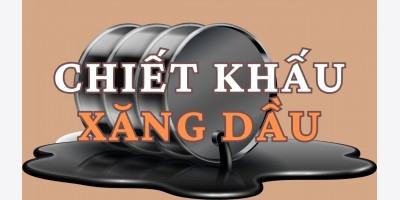Giá dầu chạm lại mức 100 USD/thùng
Sau khi hồi lại trên mức 100 USD/thùng trong phiên Mỹ tối qua, giá dầu thô Ä‘ã ổn định ở mức này trong phiên châu Á sáng nay do sá»± bất ổn ở Libya Ä‘ã lan rá»™ng ra khu vá»±c Trung Äông, nhất là Iran, nÆ°á»›c sản xuất dầu đứng thứ hai của tổ chức các quốc gia xuất khẩu dầu má» OPEC.
Mark Pervan, ngÆ°á»i đứng đầu ban nghiên cứu hàng hóa của Australia & New Zealand Banking Group Ltd ở Melbourne nói sá»± bất ổn Ä‘ang lan sang quốc gia sản xuất dầu đứng thứ hai ở Trung Äông mà Ä‘iá»u này có thể dẫn đến khả năng đẩy giá dầu tăng thêm 10 USD/thùng nữa trong những tuần tá»›i.
Giá dầu WTI giao kỳ hạn tháng 04 kết thúc phiên Mỹ tối qua ở mức 100,69 USD/thùng, tăng 2,66 USD/thùng (2,7%) so vá»›i phiên Ä‘óng cá»a liá»n trÆ°á»›c. Còn vào lúc 8h20 sáng nay (giá» Việt Nam), giá dầu Ä‘ang ở mức 100,28 USD/thùng.
Giá dầu thô Brent giao kỳ hạn tháng 04 Ä‘óng cá»a giao dịch hôm qua tăng 3,62 USD/thùng (3,2%) chốt tại mức 115,42 USD/thùng, mức cao nhất kể từ ngày 27/08/2008.
Theo báo cáo từ Viện Xăng Dầu Mỹ, nguồn cung dầu thô của nÆ°á»›c này Ä‘ã giảm 1,1 triệu thùng trong tuần rồi, nhÆ°ng khả năng Bá»™ năng lượng sẽ báo cáo tăng 750.000 thùng vào tối nay, Ä‘ánh dấu tuần tăng thứ 07 theo khảo sát từ Bloomberg News.
Oil Rises a Second Day, Exceeds $100 in N.Y. on Mideast Turmoil
By Ben Sharples
March 2 (Bloomberg) -- Oil advanced for a second day in New York, exceeding $100 a barrel amid speculation turmoil in the Middle East may spread from Libya to Iran, the second-largest producer in the Organization of Petroleum Exporting Countries.
Futures rose to the highest since September 2008 yesterday as Libyan rebels braced for renewed clashes with forces loyal to leader Muammar Qaddafi. Saudi Arabia’s benchmark stock index plunged the most since November 2008 on concern regional unrest may extend to the kingdom. Iranian protesters clashed with security forces in Tehran, Al Arabiya television reported.
“The unrest is threatening to spread to Iran, OPEC’s second-largest producer,” Mark Pervan, head of commodity research at Australia & New Zealand Banking Group Ltd. in Melbourne, said in an e-mailed note today. “Given the speed at which events are unfolding, we do not rule out a further spike of $10 a barrel or beyond in the coming weeks.”
Oil for April delivery gained as much as $1.01, or 1 percent, to $100.64 a barrel, in electronic trading on the New York Mercantile Exchange, and was at $100.30 at 11:26 a.m. Sydney time. Yesterday, the contract climbed to $100.69 before settling $2.66, or 2.7 percent, higher at $99.63. Prices are up 26 percent from a year ago.
Brent crude for April settlement advanced $3.62, or 3.2 percent, to $115.42 a barrel on the London-based ICE Futures Europe exchange yesterday, the highest since Aug. 27, 2008.
Iran Output
Iran’s Foreign Ministry said issues related to opposition figures in the country are “internal affairs,” without commenting on allegations by dissidents that authorities had detained the main opposition leaders Mehdi Karrubi and Mir- Hossein Mousavi.
Saudi Arabia, OPEC’s largest producer, pumped 8.43 million barrels a day of oil in February, the most since 2008, and Iran produced 3.71 million, according to estimates compiled by Bloomberg. Fighting in Libya caused its output to drop last month to the lowest level since January 2003.
Political turmoil has spread to Saudi Arabia’s neighbors, with protests erupting in Oman and Bahrain. Websites have called for a nationwide Saudi “Day of Rage” on March 11 and 20, according to Human Rights Watch. Uprisings have already toppled leaders in Tunisia and Egypt
In Oman, the largest Middle Eastern producer outside of OPEC, protesters blocked a highway linking the northern city of Sohar to the capital Muscat yesterday as the army set up checkpoints around Sohar and inspected vehicles. The country pumped 885,600 barrels of oil a day in January, according to data reported by the state-run Oman News Agency.
U.S. Economy
Contracts tied to the cost of shipping Saudi Arabian oil jumped 12 percent on speculation that tanker voyages will lengthen as the country compensates for reduced supplies from Libya, according to broker ACM-GFI in London.
Crude also rose as manufacturing in the U.S. grew in February at the fastest rate since May 2004. The Institute for Supply Management’s factory index increased to 61.4, exceeding the median forecast of economists surveyed by Bloomberg News, the Tempe, Arizona-based group said yesterday. Readings greater than 50 signal growth.
Federal Reserve Chairman Ben S. Bernanke said the surge in oil and other commodity prices probably won’t cause a permanent increase in broader inflation, in his semi-annual monetary policy testimony before the Senate Banking Committee in Washington.
U.S. crude oil supplies fell 1.1 million barrels last week, according to the industry-funded American Petroleum Institute. An Energy Department report today may show inventories rose 750,000 barrels last week from 346.7 million barrels, according to the median of 17 analyst estimates in a Bloomberg News survey. It would be the seventh week of gains.









